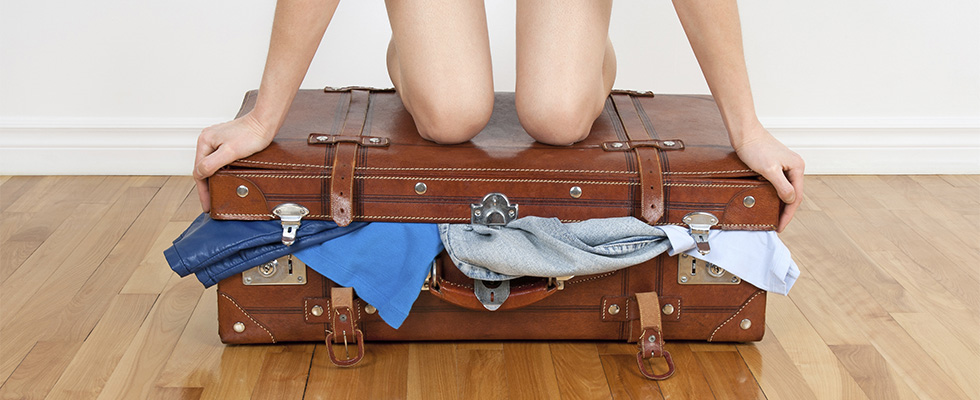
The are four components you need to consider in taking the lug out of your luggage, essentially lightening your load.
1. Choose the correct type of luggage for your destination.
2. Choosing the correct type and mix of clothing for your destination.
3. Utilizing various “packing tools” that are on the market.
4. The actual packing process, where your main goal is:
• having your clothing actually fit in the luggage
• having your clothing arrive at your destination relatively intact and wrinkle free, not in some jumbled mess
Before we begin talking about “How to Pack” your luggage, we need to first talk about the type of luggage that you need to have a successful trip.
Many, if not most travelers these days like to travel “Carry-On”.
The main reasons for traveling “Carry-On” are:
Carry-On Requirements: In general most airlines will allow 22” bags to qualify for Carry-On for domestic flights. (That’s 45 inches total – Length + Width + Girth). For international flights, that drops down to 19”.
As there is no consistency among airlines with regards to carry-on requirements, it is best to call ahead to each airline that you plan to fly and ask about it’s carry-on regulations. Other factors regarding carry-on: How full is the flight? On less-than-full flights, boarding agents are much more flexible. On a very full flight to the Philippines, the only carry-ons allowed were purses and briefcases.
For Business Travelers: I recommend a tri-fold garment bag, especially if you have to travel with a suit or two. Several rolling versions of these are available in the marketplace.
In choosing your travel wardrobe here are a few travel savvy suggestions to lightening your load.
Choose Clothing Made From Travel Friendly Fabrics
Clothing made of microfiber, Tencel, CoolMax-Polyester, some cotton-polyester blends, silk and silk-blends, and “wrinkle-free- cottons” are typically light weight, easy care, wrinkle-resistant (if not wrinkle-free), and can be laundered in a hotel sink, drying by morning.
Choose Your Colors
Choose two neutral colors to form the basic foundation of your travel wardrobe. Choose lighter tones for warm weather; medium and darker tones for cooler climates. These should be able to be mixed and matched easily, and do double duty from day to evening, casual to fancy.
(blacks, beiges, grey, navy, etc. all work well)
Reversible Items Do Double Duty
Reversible items can lighten your load by having one garment serve the function of two. Some reversible items are casual on one side and dressier on others. Some have a solid color on one side and a print on the other. Either way, reversible items are a win-win for the traveler seeking to lighten their load.
The Packable Layering System
Savvy travelers carry a system of lightweight, packable layers, for maximum versatility with minimum weight. These layers can be easily added or subtracted as you travel, keeping you comfortable in virtually any climate. Working from the inside out these layers are:
1) Thermal or Base layer
2) Insulating Mid-Layer
3) Outer Layer
We like to use the multi-layered packing method. The basic concept is to cushion your clothing, avoiding hard folds or creases, that emerge as wrinkles when you unpack your luggage.
If despite your best efforts, you unpack your bag at your destination and discover some unsightly wrinkles, fret not. Simply turn on the hot steam in your shower and hang the garment, and the wrinkles should fall right out.
THE FINAL WORD: Regarding packing, the best advice is to bring half the clothes and twice the money!